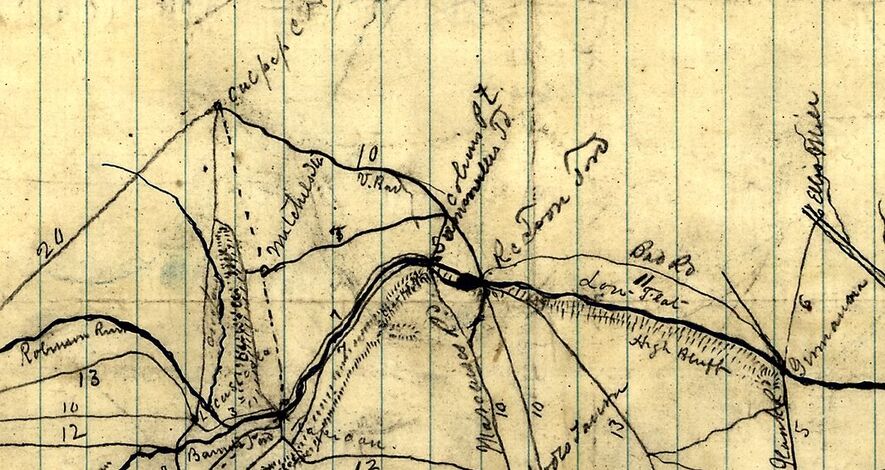In late March of 2019, Donald Brown of Colorado stopped at St. Paul’s Church, located roughly one mile from Raccoon Ford on Algonquin Trail. He had driven across the country to visit Raccoon Ford. His great grandfather was a Private in Company C of the 4th New York Cavalry Regiment who fought and was captured by Ewell’s Confederate troops at Raccoon Ford on September 16, 1863.
After being unhorsed and captured, Mr. Brown’s great grandfather, Private John W. Brown, was marched under guard to Orange Courthouse, and there put on an Orange and Alexandria Railroad train to Gordonsville. At Gordonsville he was then transferred to a Central Virginia Railroad train that took him to Richmond. He remained a POW there until January 6, 1864 when he was paroled under the Dix-Hill Cartel exchange agreement. At City Point, Virginia he was handed over to Federal authorities and boarded a side wheeler steamboat and sailed down the James River, eventually ending up in a Union Hospital in Annapolis, Maryland.
Private Brown rejoined his cavalry unit in time to participate in the Gettysburg Campaign, until reaching Hanover Junction June 30, 1864. The 4th New York along with the 2nd Brigade was detached and sent to Manchester, Maryland where it picketed the surrounding countryside until July 3 when it was sent to Westminster, Maryland. On July 4th, the New York Volunteers joined Kilpatrick’s Division in pursuit of Lee’s retreating army and participated at Monterey Pass and many other engagements until Lee had re-crossed the Potomac River.
Ron Vecchioni, who owns and is refurbishing St. Paul’s Church, showed Mr. Brown the original, now sunken, Raccoon Ford road trace on the church property and told him that his great grandfather had ridden his horse down that very path 150 years ago and likely stopped and rested inside the very church he was standing in front of. It was an emotional moment for Mr. Brown. He then eagerly went inside to take numerous photos and look at the few exhibits in the church.
Raccoon Ford and the surrounding landscape have remained largely unchanged over the years. Because of this, visitors delving into area history have a unique opportunity to take in the same topography that was settled and cultivated, as well as marched on and fought over, during years past. This experience can be powerful for those, like Mr. Brown, who are researching family and find themselves able to walk in their ancestor’s footsteps, taking in the unchanged views of rolling hills and river bluffs.

